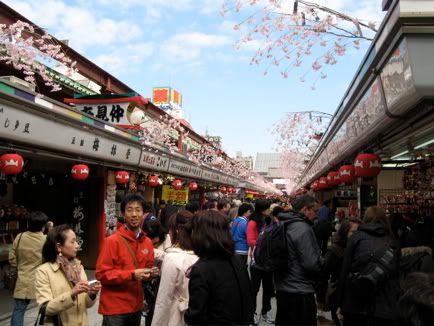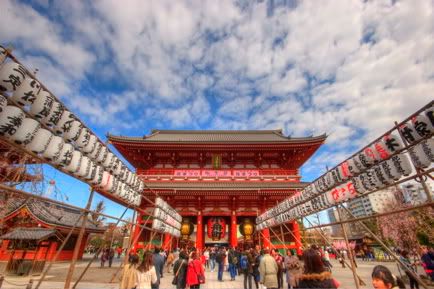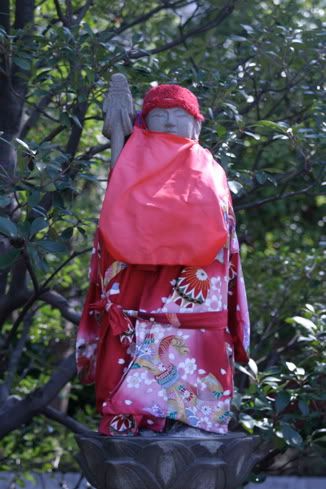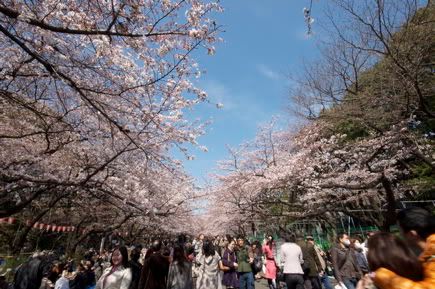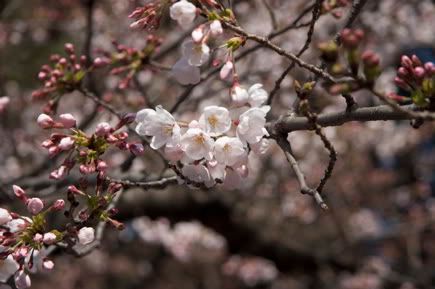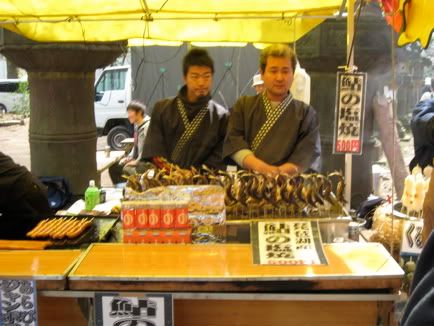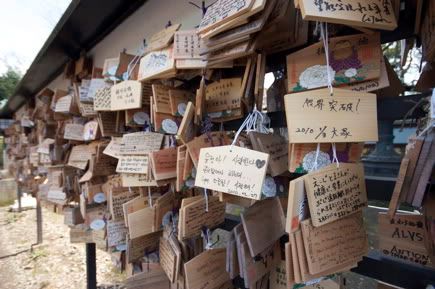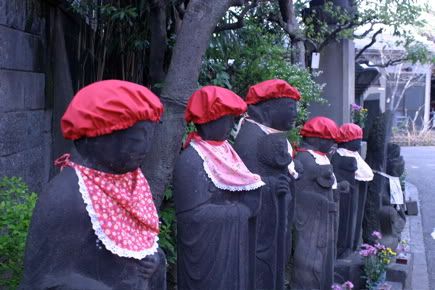Just when it seemed like we were settled in Tokyo, we were up again and off to Kyoto, over 200 miles west in the Kansai region of Japan.
Kyoto was Japan's capital city from the 8th century right through until 1868 when the government transferred to Edo (since renamed Tokyo). Although originally one of the chosen atomic bomb targets, Kyoto escaped the heavy WW2 bombing suffered by much of the rest of Japan and is one of the few areas with a large number of prewar buildings, including traditional narrow wooden townhouses known as 'machiya'. This also means that many of the temples and other historic buildings are still standing in their original settings. 20% of Japan's National Treasures exist in Kyoto and a large area of the city and its surroundings is designated a UNESCO World Heritage Site.
Getting to Kyoto from Tokyo involved a highly exciting trip on the Shinkansen (bullet train)! On Sunday morning, we checked out of our hotel in Asakusa and made our way to Ueno station on the subway, where we joined a large queue to pick up our Japan Rail Passes (you purchase the pass from outside Japan and get an exchange order, which you swap for a pass at one of the Japan Rail offices in the main stations). The whole process took an immense amount of time, not helped along by the fact that we seemed to be the only people in the queue who had bothered to fill out the exchange form in advance. But eventually we got our passes - they have a shiny cover with a picture of the great wave on - and rode the JR line down to Tokyo station.
The next stage was to try to make a seat reservation on the shinkansen (there are some unreserved seats but we had been warned they can be busy, and we didn't fancy standing for 2 hours!). This was easier than we expected as there is a dedicated reservation counter and you can just point to the time train you want, although the girl on the counter helpfully spoke some english and told us our train and platform number. This done, we were off!

I guess I knew Japan was mountainous but I didn't realise quite HOW moutainous it is. It's very up and down! Taking the train across the country was a good way to see the landscape. It is also very industrial, which is also unexpected as I suppose you think of rural Japan as a little bit quaint. It is very modern though, which I guess makes sense as it's almost all post-war built.
We scoffed bento boxes for lunch on the train and pulled into Kyoto Station just over two hours later. Not as busy as Tokyo and with fewer connection options easier to navigate around. It took us a hugely long time to work out the subway tickets and there were no english instructions anywhere, but eventually we got it. It's actually very easy, just not really immediately obvious! 20 minutes later, we stepped out of the subway into a quiet, freezing cold street on the eastern edge of the city and followed a map along a beautifully picturesque canal path for a few minutes til we arrived at our hotel, the Kyoto Traveller's Inn.
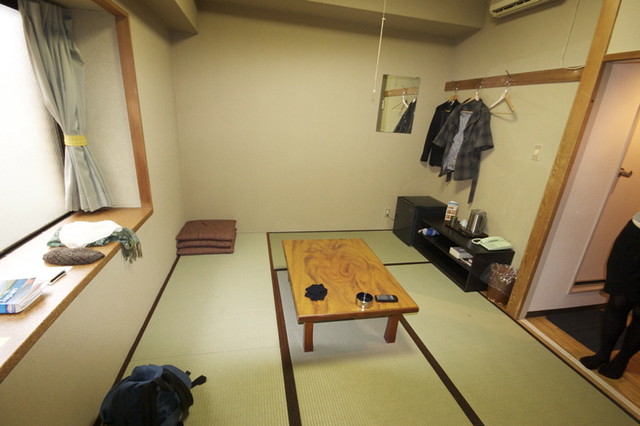
Our Japanese style tatami room! We weren't expecting that at all, but it turned out to be a lot of fun. The futons you sleep on are rolled up in the cupboard during the day! There was a little bathroom, fridge and kettle with a large supply of green tea. It was like camping but indoors I guess (and with heating, fortunately). It was a great find.
We unpacked a bit then headed out to eat, heading into the city centre. It was absolutely freezing so we headed for a vegetarian restaurant we picked from the book, called Hale. We found it in a back street, an old-style machiya which you entered and walked down a long corridor, then through a sliding door into the restaurant itself, where we were greeted at the door by the two ladies who ran the place - a younger lady who served the food and an older lady who seemed to be cooking it. It turned out to be one of the best dining experiences either of us had ever had! We left our soggy, cold shoes next to a glowing heater and stepped up into the raised dining room. There were only two tables, each seating four people, and we sat down on cushions at the only two places left. The menu was very simple and was actually all vegan. I don't really know what a lot of it was but there were steamed vegetables, fried tofu, pickles, a dish of something that was a bit like rice but not... half the vegetables I didn't even recognise but I've since found out that there are some vegetables unique to the Kyoto region!
We accompanied the meal with hot sake and plum wine and green tea. It was so comfortable sitting in the traditional dining room, all dark wood and exposed beams I didn't want to leave! But leave we had to, with the two ladies coming out of the kitchen to bow to us as we went out (I love this custom in Japan - the whole staff of a restaurant will come out to greet you and bid you farewell). It was a fantastic meal and a fantastic experience - as close as we came to trying the high-class Buddhist vegetarian cuisine Kyoto is famous for.
After a long sleep on our futons, Monday began with a trip into the hills to visit Nanzen-ji, one of the most important Zen temples in Japan. We had a look round the main gate which is HUGE and imposing in dark heavy wood. Then, we sidestepped into Tenjuan, one of the little sub-temples. You had to pay to enter (only about $2 though) but it was well worth a visit as it was so peaceful. A neat little temple building stands in a wonderful garden, with a large pond of koi. It was so magical!
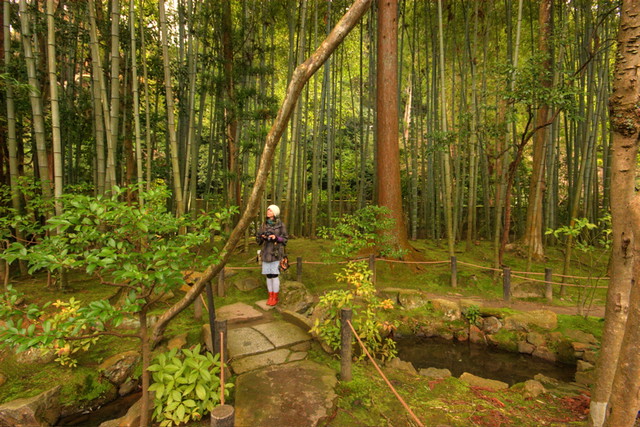
We were the only people there for most of the time, and we spent a good long while walking around and enjoying the peace, before heading back out and further up towards Nanzen-ji, at the top of the hill. However, we decided that Tenjuan had been so enjoyable that we wouldn't bother to pay to go into Nanzen-ji so instead we began the Philosopher's Path walk up the mountainside, a lovely walk along a canal with overhanging cherry trees and lovely old style houses and little cafes lining the sides. We stopped in for a cup of tea and slice of cake at one, as it was really bitterly cold and we had been outside a long while. The Philosopher's Path is so named as it was the favourite walk of one of Kyoto's more eminent philosophy academics.
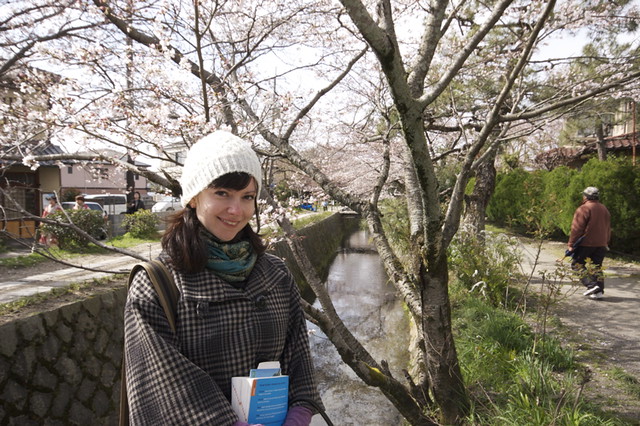
At the end of the path, high up on the mountainside, lies Ginkaku-ji, the Temple of the Silver Pavilion, built in the 15th century. It was intended to be coated in silver to match the existing Golden Pavilion (more on that later!), but even though this never happened, the nickname stuck.
It is set in large gardens, the most interesting feature of which was this 'dry garden' - shaped mounds of sand - which is supposed to aid contemplation.
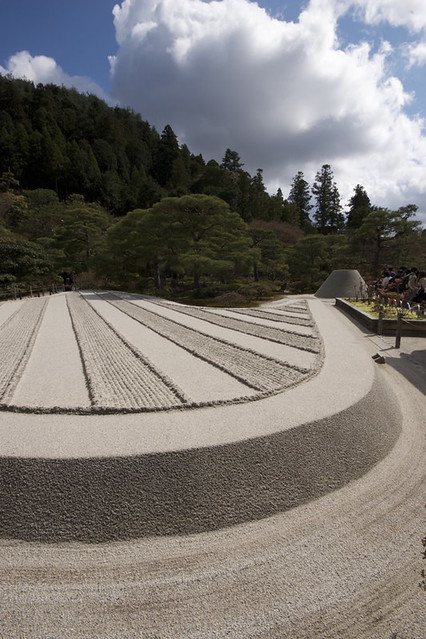
The gardens were like a fairytale - we realised then that all of what we thought was grass was actually moss, giving it this unusual, incandescent glowing green look.

The temple itself.
After exploring the gardens, we walked back to our hotel, picking up takeout sushi for lunch on the way which we ate in our room. Caught the subway to the city and wandered round the department stores for a bit, then had a hot starbucks. It had started snowing when we were at Ginkaku-ji and was still snowing now quite heavily.
The city centre area of Kyoto is nice. After Tokyo it felt very provincial, but it reminded me of a larger UK city centre but a bit more stylish, neater I guess. It felt very safe and cheerful.
We found a really cool cafe to have dinner at, called Sarasa. It did kind of modern Japanese cafe type food - lots of salads with different types of mushrooms, noodles, rice dishes, vegetables. It was really friendly and there were a lot of interesting looking younger people there, definitely somewhere to go back to. Then, back to the room to roll out our futons for the night!
Tuesday morning began with a trip right across town on the bus to visit the Temple of the Golden Pavilion, Kinkak-ji. This temple dates from the 14th Century, but has actually been rebuilt 3 times as it was burned down twice in the Onin War in the 15th Century, then again more recently by a suicidal monk in 1950. Nevertheless, it is a fantastic sight!
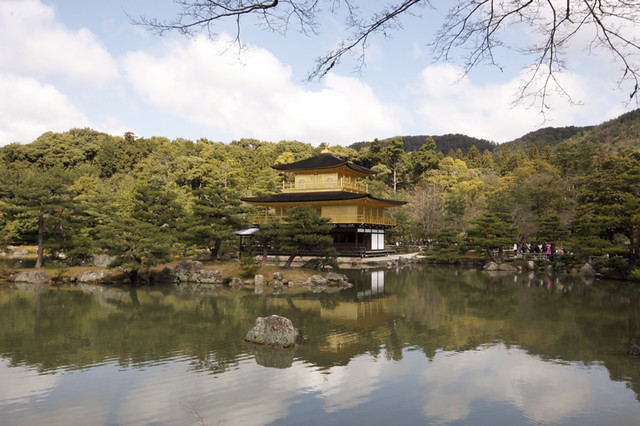
It gleams across the Kyoko-chi (Mirror Pond) and all around it is a beautiful Japanese stroll garden which gives some lovely views over the temple itself as well as further afield. It was however enormously busy, so we didn't stay too long in the gardens, just enjoyed the views for a little while, especially the layers of snow starting to melt and drip from the walls and fence posts.
We walked down the road a little way for the next stop on our day's agenda - the Kyoto Museum for World Peace. This had an interesting little write up in the Rough Guide and since the entry fee was cheap and it was close by, we thought we'd check it out. It turned out to be brilliant. Most of the displays were just in one large room, but they are enormously detailed and comprehensive without being overwhelming. Everything in the displays is in Japanese, but the lady on the desk at the entrance gave us English-language guides which were very good - A4 booklets which described each part of the display, as well as giving you a general history lesson on the relevant facts.
The exhibition traced the history of the 15-Year-War, which is what the Japanese call WW2 - they had already been at war with China for some years before WW2 proper started. It focused on Japan's militarism and the terrible effects it had on other Asian countries as Japan strove to colonise pretty much everywhere and make their empire the biggest in the world. The tried to 'Japanise' all the countries they took over, forcing people there to speak Japanese, celebrate Japanese holidays etc. It also didn't gloss over atrocities commited by Japanese soldiers, including the Nanking Massacre and the use of 'comfort women' - Japanese women shipped over and forced to act as sex slaves for the soldiers. However it was also very balanced and told of the hard life of the soldiers - enforced conscription and great onuses placed on them - for example, they had to promise to commit suicide if they were to "undergo the humility of being captured alive". There was also a big section on the privations felt by the rest of the Japanese people - extreme rationing (it was unbelievable what they survived on) and constant air raids, whilst being force fed ideas about the greatness of being at war - no dissent on this point was allowed. It was just drummed into them that war=good. There were even children's colouring books on display with pictures of tanks and guns, which was a little disturbing.
It went on to talk about war elsewhere in the world, basically touching on every modern war however small or large from WW2 through to Bosnia, Kosovo, Northern Ireland even. The basic message was just that war is bad. For everyone.
We left the museum and caught the slowest bus EVER to Kyoto station, ducked into the Isetan store for bento boxes and caught the train using our JR passes to Inari, 2.5km south of Kyoto.
Next to the station is Fushimi-Inari Taisha, the head shrine of the cult of Inari (Shinto god of rice and sake - yay!) The colourful shrine buildings at the entrance were great, but we had come to climb a mountain, Inari-san!
There is a 4km maze of paths climbing to the top, lined the whole way with hundreds of red 'torii' gates, each donated by a company wishing for business success.
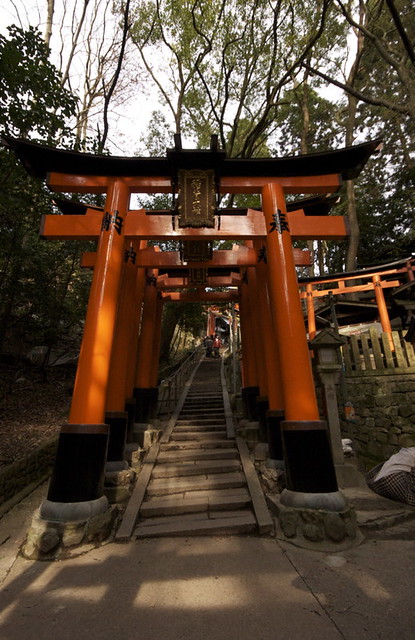
It was a pretty steep climb, but every now and again the path would open out into a little clearing with tiny shrines and perhaps a little tea house to rest in.

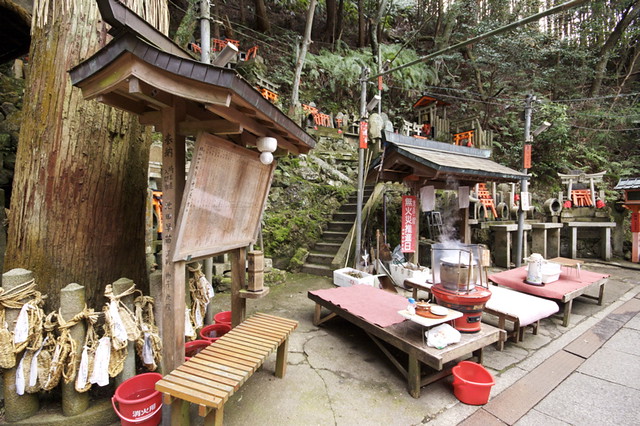

The view from the top was well worth the climb. But by this point it was starting to get dark so we pootled back down to the bottom and caught the train back to Kyoto. Got a big bowl of ramen from a little place in the station food court for dinner, excellent!
Please visit Flickr to see ADDITIONAL BONUS PHOTOS! and also to see these same photos in a less rubbish, washed-out format (i have no idea what photobucket does to them but I don't like it!)


